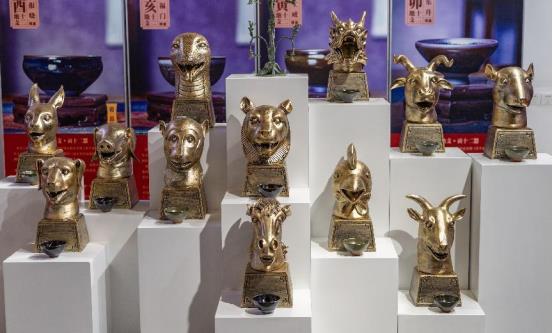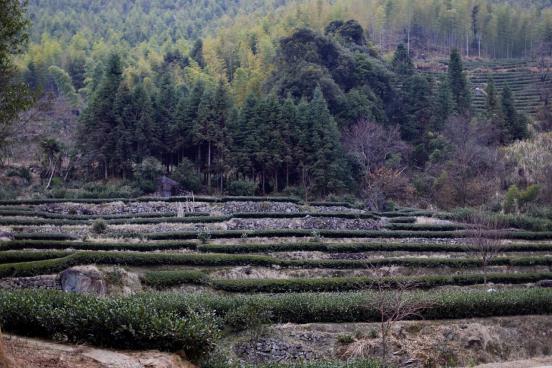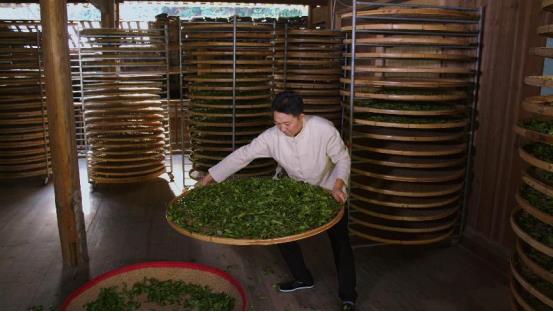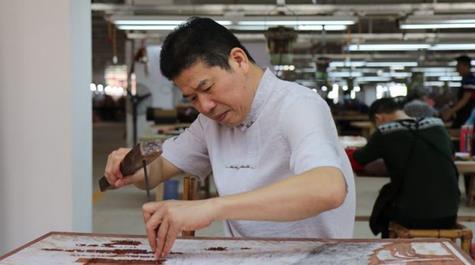The culture of the country is vast and profound | Thousands of craftsmen Qi Shoucan Ruochan Star
Author:Chongzuo Radio and Television Time:2022.09.25
Chinese culture is one of the four ancient cultural systems in the world, and it has a significant impact on the process of human society and world civilization. This uninterrupted cultural long river contains the vast and deep -star intangible cultural heritage. Our ancestors condensed the blood of Yanhuang from generation to generation, passed down from generation to generation until today.
As the crystallization of the wisdom of the people of all ethnic groups in China, the creation of the intangible cultural heritage of China has always been closely linked to the splendid history of Chinese civilization, reflecting the development of human civilization, showing the humanization of humanity and practice. High wisdom. In the process of Chinese civilization, these intangible cultural heritage built a spiritual homeland for the people of all ethnic groups in China.
Protecting and using China's intangible cultural heritage is conducive to the condensation and stretching of the national spirit, and it has an inestimable role and significance for the realization of the great rejuvenation of the Chinese nation.
Throughout the deep non -heritage culture, it contains the core elements of cultural genes, spiritual characteristics, values, psychological structures, temperament and emotions of various ethnic groups. It is the soul of a country and a nation. Fujian Province is the only province that my country has obtained the "Grand Slam" in the three series of international non -heritage protection so far. Below we list some craftsmen who have unique innovation in various non -heritage culture. There are many types of non -heritage culture and have a long history. Like non -heritage. This is worthy of praise and praise.
1. China Intangible Cultural Heritage -Guqin production skills
Millennium Guyi Changtai District has educated the arts since ancient times. According to the "Changtai County Records", in the Song Dynasty, Yiyi Huang Mengyong visited the early years of the Changtai. The piano is the matter, the body of the yin and yang, and the spring of the sound of the palace. The county chronicle also records the retention of the piano room, the introduction of the piano device, the ceremony, etc., all reflect the influence and development of Guqin culture in Changtai.

"Seven years of 斫 一 一 一 一“ ““ “" Xie Jiandong built the Chinese Longren Guqin Cultural Village in order to make Guqin's production technology better inherit and develop in the contemporary times. The production of each bed requires hundreds of procedures, which can be completed for seven years. Among them, Xie Jiandong combines the traditional production skills of Guqin with modern material science technology. It takes four years to deal with the piano materials, improve the quality of the piano material, reduce the moisture absorption and water absorption of wood, improve the size stability, biological corrosion resistance and resistance to resistance Climate. In addition, Xie Jiandong led the team to develop the dragon's ice strings to make high -strength synthesis fiber silk, real silk and nylon silk. The innovation in this inheritance is praised by the famous Guqin performers and the professor of the Central Conservatory of Music as "epoch -making contributions."

2. China Intangible Cultural Heritage -Jianyao and Jianzhan Furating Skills
Jianyao Jianzhan firing skills, local traditional skills in Nanping City, Fujian Province, and one of the national intangible cultural heritage. Kiln, one of the famous kiln in the Song Dynasty, also known as "Jian'an Kiln" and "Wu Ni Kiln". It is distributed in Jianyang, Nanping Tea Yang Kiln, and Wuyi Mountain in Nanping. It is famous for burning black glaze porcelain. Because the kiln was developed into the Song Dynasty "people's kiln officer", the "supply royal" and "into the cup" models were used as the royal customization of the royal style. "For the royal" is to give it to the royal use; The Emperor Song Huizong of the Song Dynasty said in the "Great View Tea Theory", "The color is expensive and black, and the jade tube is the top" means that the kiln is built.

The creation of Guiliantang [Gong • Twelve Instruments] The creation of the work of building a series of works originated from the chronological method of my country's great "Sky and Earthly Branches", which is what we call the lunar calendar. The combination of China's great zodiac culture has created a total of 12 instruments. Jianzhan was named "Gong" as the royal tea device in the Song Dynasty. The product combines Chinese ancient mythology and archeological basis with great cultural value and significance and relying on the carrying display of Jianzhan. It is a rare innovation.

Guiliantang 135.6 meters of dragon kiln firewood burning real shot

3. China's intangible cultural heritage -Shoushan stone carving production skills
Shoushan stone carving, local traditional art in Fuzhou, Fujian Province, one of the national intangible cultural heritage. During the Southern Song Dynasty, Shoushan Stone Mine had been mining. After the development of the Yuan Dynasty, Ming, and Qing Dynasties, the independent Shoushan stone carving industry finally formed. During the Tongzhi and Guangxu period of the Qing Dynasty, Shoushan stone carving formed its own unique style, and the two major genres of Dongmen and Ximen appeared. Shoushan stone carving techniques are rich and diverse, and they are superb and cooked. During the development process, they have been widely used, combining the carving skills and art essence of Chinese painting and various folk crafts. Shoushan stone carving works are widely theme, including characters, animals, landscapes, flowers and birds and other categories.

In Lin Guozhong's hands, a sincere engraving knife carved into life; a simple stone, ups and downs with sadness and joy. Artistic creation is not limited to the topic of tall topics. There are white snow in Yangchun, but also on Liba people. The subject matter of creation can reflect different classes. He believes that the inheritance of Shoushan stone carving art has been thousands of years, and the accumulation of traditional Shoushan stone carving skills has also been very mature. The new generation of Shoushan stone carving artists must have a different approach to break through. Introducing modern sculpture techniques, the first three elephants fusion sculpture techniques and light and shadow stacking maps ... In terms of sculpting techniques, a lot of exploration and innovation have been conducted. He said that in the past, the collection industry has preferred traditional themes, and this phenomenon has changed in recent years, and Shoushan stone carvings that innovate the subject matter have become more and more popular. 4. China Intangible Cultural Heritage -Zhangdun Gongmei White Tea Production Skills

The white tea in Zhangdun, Fujian is located in the small basin in the east of Wuyi's mountain. The mountains are stacked here, and the green water winds; Time and place make this the most suitable area for tea. As early as in the Song Dynasty, it was included in the Gongchang Tea District of Jian'an Beiyuan. White tea, a treasure in tea, has a long history,
With its unique appearance and internal quality, it has been famous at home and abroad. During the Guangxu period of the Qing Dynasty (1875 ~ 1908), there were more than 60 tea merchants in white tea, of which 21 were Hong Kong merchants. In the 1920s, white tea was sold by "Guangke, Annan, Jinshan and other ports." White tea is a special treasure in my country's tea. Because the finished tea is mostly buds, it is full of white, and it is named after silver.
Tong Taichang's current inheritor Wu Baohua is "representative inheritor of Zhangdun Gongmei white tea production skills". Respect the traditional technique inheritance and pursue a better integration of nature and science on the basis of the tea making process. Strict control of tea and green picking standards, try to keep the tea green as much as possible and fresh green, and reasonably control the withering process of white tea according to the weather temperature change-green leaves are evenly paved on bamboo sieves, controlled the weight of the tea green standard for each screen, and do not shop thickly. Carefully observe the enzymatic transformation process during withering and pay special attention to the control of temperature and humidity. Each step is cautious and carefully requires craftsmanship on the basis of innovation. The innovation of "Alpine Wilderness Gongmei Xiaobai" and "alpine and narcissus white" innovation according to the quality of the tea, the white tea made by the pick -up and picking standards — the heart is full, the tea is well -completed, the color is gray and green, and the color is shiny. ; There are many sprouts, leaf Zhang tender, bright and soft tender tea soup, light apricot yellow and bright, and the aroma is fragrant; the taste is fresh and mellow, and the mouth is smooth and smooth.

5. China's intangible cultural heritage -Xianyou classical furniture production skills

Xianyou folk crafts, from the Tang and Song dynasties, in the Ming and Qing dynasties, and flourished in the contemporary contemporary, are an ancient craft genre with unique artistic style. In the Song Dynasty, Xianyou sculpting art gradually incorporated into furniture production skills from architecture decoration, and folk woodcarving craftsmen used traditional woodcarving art to sculpt and decorate hardwood furniture. "Xianzuo" craft furniture has formed regional brands with industry characteristics. It occupies an important position in Chinese woodcarving furniture, and with its unique local style, it is also known as "Su Zuo", "Jingzuo", and "Guangzuo". One of the four major schools of classical furniture in the country in the country, with its elegant style, rigorous structure, and sophisticated materials, it has become a model of Chinese furniture.
"Xianzuo" is the classical furniture production skills of Xianyou County, Putian, Fujian. "Beijing Zuo" also known as the four major schools of Chinese furniture, occupying half of the riverside in the high -end mahogany market, and Huang Fuhua is one of the representative figures of the "immortal" craftsman. He feels that "the excellent traditional culture of China is the soul of the" immortal ". The new era of Xianyou classical furniture must inject classical feelings, and it must also break through in craftsmanship. . In addition to retaining the simple style of traditional furniture, selecting precious wood optimized products such as Hainan Huanghuali, Indian leaflet rosewood and other valuable wood optimization products. The mahogany furniture products meet the consumption needs of the new generation of young people for the "beautiful life of Chinese culture". Such innovation allows more younger groups to understand classical furniture, accept classical furniture, and better adhere to traditional Chinese culture.


- END -
Starting from your name, later, there is everything
One poem and one article every day's original poems and dreams, don’t pass by wit...
[Internet China Festival · Mid -Autumn Festival] Duanzhou District has carried out various forms of activities to protect the traditional "taste"

Nung, moon and new moonToday is August 15th of the lunar calendarIt's another year...